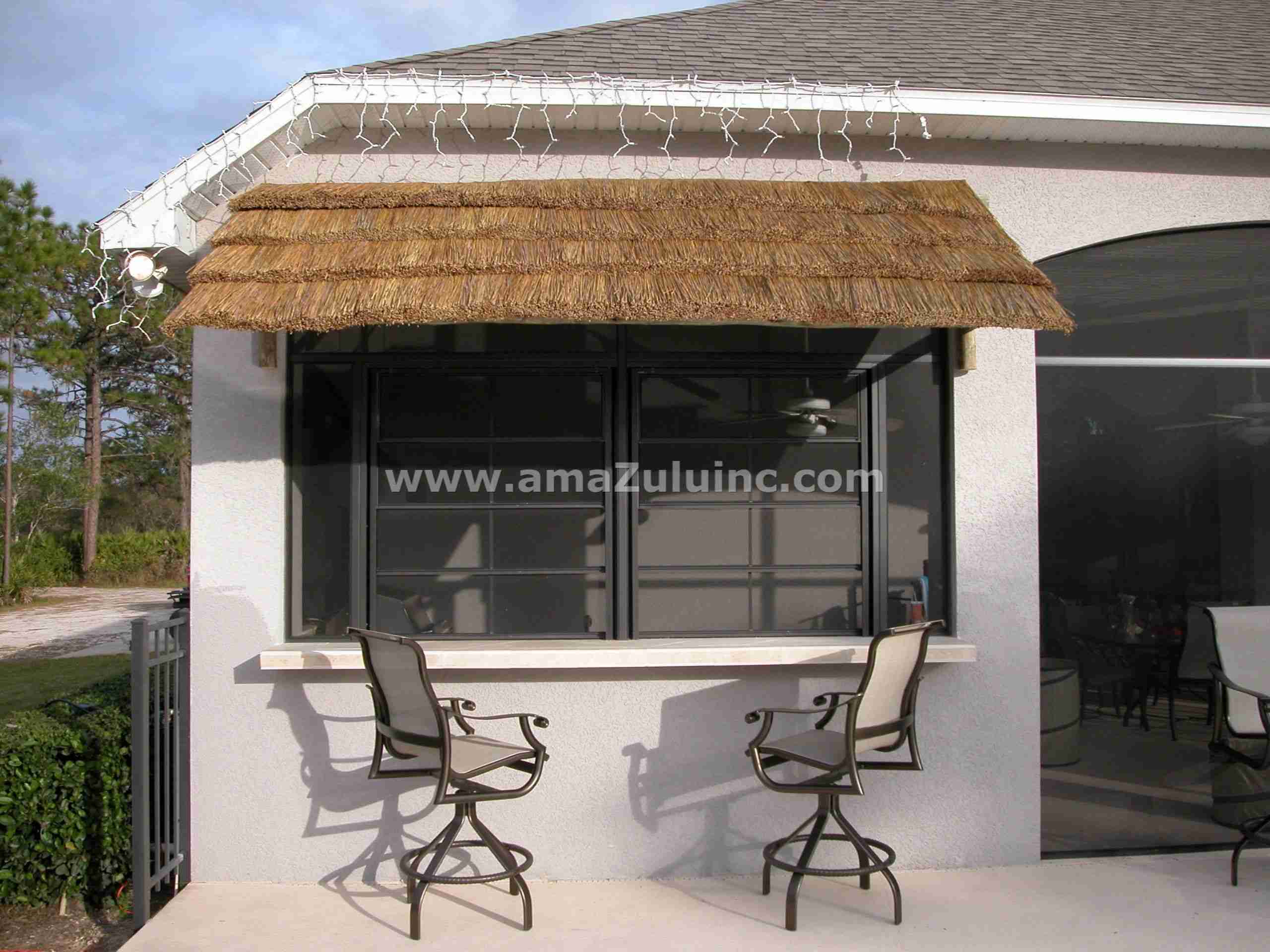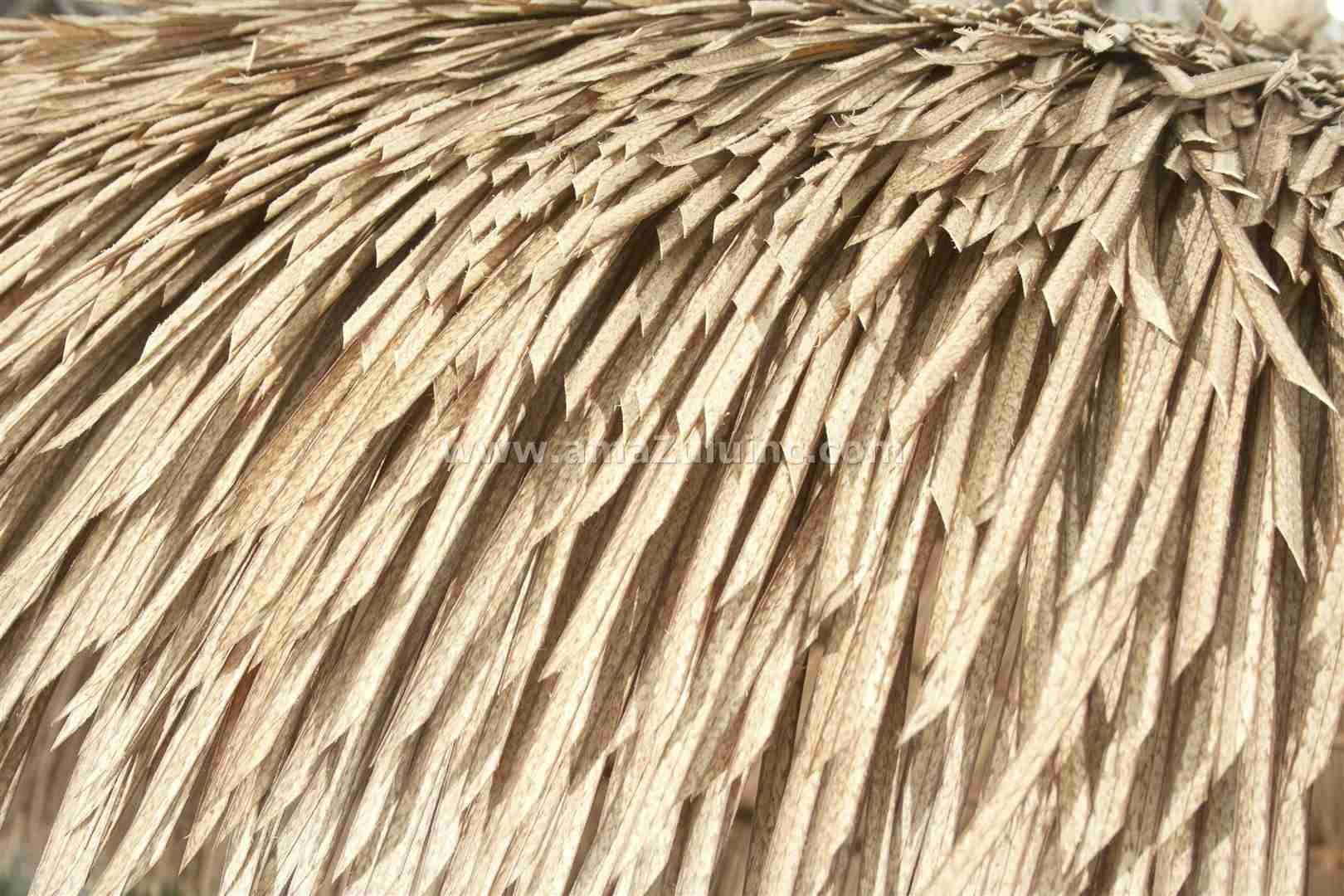Installing synthetic thatch in theme parks and resorts can be a challenging task. Without proper guidance, it’s easy to make mistakes that can lead to wasted materials, increased costs, and a less-than-perfect finished product.
Many contractors and DIY enthusiasts struggle with understanding the specific requirements for synthetic thatch installation, such as correct spacing and overlapping techniques. But don’t worry, we’re here to help.
This guide will walk you through essential tips for installing synthetic thatch, ensuring a durable and attractive finish. Whether you are a seasoned contractor or a newcomer to synthetic thatch, these tips will help you avoid common pitfalls and achieve professional results.
Tip 1: Understand the Basics of Synthetic Thatch Installation
Installing synthetic thatch might seem daunting at first, but it follows a straightforward process similar to installing shingles. Here are the basic steps:
- Start with the First Row: Begin at the bottom edge of the roof, measuring the desired overhang. Secure the first row of thatch panels, ensuring they are level and properly aligned.
- Layering: Place the second row on top of the first, overlapping it slightly. Continue this process up to the top of the roof.
- Horizontal Battens: If installing on an open frame roof, attach the thatch panels to horizontal battens. These battens should be spaced either every 9 inches or every 12 inches, depending on the product.
- Panel Widths: Each thatch panel will vary in width (30 inches to 42 inches). Install them in a continuous row, ensuring each panel overlaps slightly with the next.
“Synthetic thatch panels install like shingles,” says Tristan Ishtar, vice president of sales at amaZulu and a synthetic thatch expert. “If you can do regular shingles, you can do synthetic thatch.”
Tip 2: Use the Right Tools and Materials
Having the right tools and materials is crucial for a successful installation. Here’s what you’ll need:
- Tools:
- Hammer or nail gun
- Measuring tape
- Utility knife or shears
- Ladder or scaffolding
- Chalk line
- Safety gear (gloves, goggles, hard hat)
- Materials:
- Synthetic thatch panels
- Horizontal battens (if applicable)
- Nails or staples
- Extra panels for waste allowance
Tip 3: Ensure Proper Spacing and Overlapping
Correct spacing and overlapping are essential to prevent material shortages and ensure a neat finish. The horizontal battens should be spaced either 9 inches or 12 inches apart, depending on the type of synthetic thatch you are using. This spacing allows for secure attachment of the panels.
When overlapping the panels, make sure to follow the manufacturer’s guidelines. Overlapping too much can cause you to run out of material, while too little overlap can leave gaps. Generally, you should overlap each panel sideways as well as upwards, ensuring a tight and weather-resistant fit.
Pay close attention to the measurements and instructions provided by the manufacturer. By doing so, you’ll avoid common installation mistakes and achieve a professional-looking thatch roof.
“The main mistake I see is incorrect spacing,” Ishtar says. “If you overlap the synthetic thatch panels too much sideways or if you don’t space the horizontal battens correctly, you’ll run out of material. Always follow the measurements and instructions, and account for waste.”
Tip 4: Plan for Waste
Planning for waste is a crucial part of installing synthetic thatch. Here’s what you need to consider:
- Expect Waste: Understand that waste will occur, especially when cutting shingles for hips, valleys, and edges.
- Calculate Waste Allowance: For simple A-frame roofs, plan for about 10-12% waste. For more complex roofs with multiple hips and valleys, allow for 20-25% waste.
- Reuse Large Pieces: Whenever possible, reuse larger waste pieces in other parts of the roof to minimize waste.
- Order Extra Material: Always order a bit more material than you think you’ll need to account for unexpected waste.
By planning for waste, you’ll avoid running out of materials and ensure a smoother installation process.
Tip 5: Ensure Fire Safety Compliance
Fire safety is a top priority, especially for commercial installations. Many clients are concerned about the fire retardant properties of synthetic thatch. AmaZulu offers fire retardant options – we make sure that our synthetic thatch products provide the necessary protection and certification.
Choosing fire-retardant synthetic thatch not only meets safety regulations but also gives peace of mind, knowing that the materials used are safe and compliant with local fire codes. This makes the installation process smoother and hassle-free, as you can be confident in the safety of your finished project.
FAQ: Addressing Common Client Concerns
At amaZulu, we often consult with clients who have specific concerns about synthetic thatch. Here are some of the most common questions and their answers:
Does it look real?
Yes, synthetic thatch is designed to mimic the appearance of natural thatch closely. The materials and manufacturing processes used ensure that it looks authentic and provides the same aesthetic appeal as natural thatch.
How long will it last?
Synthetic thatch is highly durable and can last many years, even in harsh weather conditions. Proper installation and regular maintenance can extend its lifespan, making it a cost-effective solution for theme parks and resorts.
Is it fire retardant?
AmaZulu’s synthetic thatch products are available with fire retardant properties, meeting the necessary safety standards. We offer fire retarding services both before shipping and on-site after installation, providing a Class A Certificate for inspection.
What about the price?
While synthetic thatch might have a higher upfront cost compared to some other roofing materials, its durability and low maintenance requirements make it a cost-effective choice in the long run. It offers great value for money due to its longevity and aesthetic appeal.
Our Experts Will Help You With Your Next Synthetic Thatch Project
Installing synthetic thatch in theme parks and resorts requires careful planning and attention to detail. By understanding the basics of installation, using the right tools and materials, ensuring proper spacing and overlapping, planning for waste, and addressing fire safety compliance, you can achieve a durable and attractive thatch roof.
For all your synthetic thatch installation needs, contact amaZulu. We offer a range of services to simplify your project:
- Estimating: Certified installers apply fire retardant to provide a Class A Certificate for inspection, or the product can come with an inherent fire retardant.
- Design Assist: Collaborate with amaZulu’s experts for product selection and customization.
- Fabrication: Pre-fabricated components make installation efficient and profitable.
- Installation: amaZulu ensures a clean finish, on-time and on-budget.
- Customization: Unlimited customization options from a global network of artisans.
- Fire Retardant Services: Ensure compliance with fire safety standards with certified fire retardant applications.
Request a quote from amaZulu today for expert guidance and high-quality products to make your project a success!





